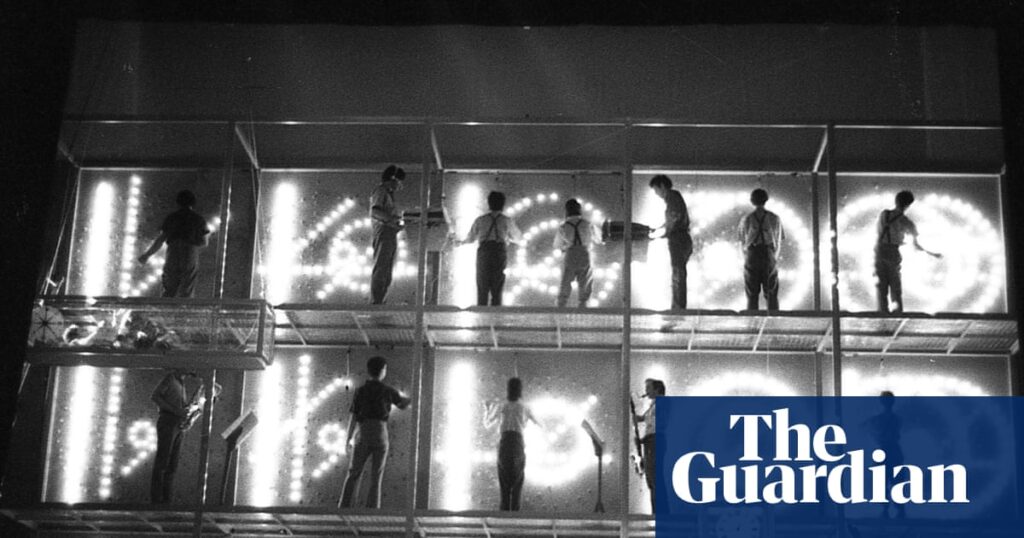There was a production of Bob’s in New York in 1975, A Letter for Queen Victoria, and some friends told me, “Oh, you should see this, it’s really amazing”. I was a dancer and choreographer and I had worked with the Judson Dance Theatre – it was all about no music, pedestrian movement, performing in alternative spaces, avoiding all the traditional trappings. Here was Bob, though, in a theatre, with a composer and lighting … it was such a contemporary sensibility. I’d never seen anything like it.
I met Bob shortly thereafter at a festival, and he talked right away about working together on Einstein on the Beach [with composer Philip Glass]. We worked in his studio in lower Manhattan. Bob worked in a kind of improvisatory fashion. Day to day we were never sure if he was going to review what we had done or start again. You just would come up with something and run with it and see what happened. We would improvise day after day and narrow it down and see what worked. He was never entirely specific about what he wanted, but somehow he got exactly what he wanted. There was a lot of trust and he supported me in my work in such a strong way. It gave me a sense of freedom.
The next thing we worked on was Patio [full title: I Was Sitting on My Patio This Guy Appeared I Thought I Was Hallucinating]. Right after Einstein, he gave me a 38-page script and said, “Tell me what you think”. And, of course, I loved it. He thought of text in different ways. Not necessarily the meaning or the narrative aspect, but the music of it, the timing and the rhythm.
He just had a unique way of thinking. A lot of the notes that I got from Bob when he was directing were in the form of pictures. From Einstein I have several pages of little drawings he did for every single scene. He was always thinking visually. Watching him do the lighting for Einstein in the theatre in Avignon – to appreciate what he could see, the time and consideration it takes to develop exactly what he wanted – this is something so special and, in a way, difficult about Bob’s career. It all happens in three dimensions – it doesn’t translate anywhere else.
There were a lot of difficulties getting work made in the US. Luckily, he had so much support in Europe. He was appreciated and given opportunities. But there was disappointment, and certainly some anger, because it was difficult for any of us in the downtown crowd in New York. The attitude was: why don’t you just stay downtown! But it didn’t stop him. Bob wanted to do Einstein at the Met – and he did.
I have to mention the Watermill [a centre for alternative arts education in New York]. He managed to bring this wonderful place to America and bring these students in year after year. Every morning he would talk to the entire group, and he’d get round to every single student. He created this place that’s so special.
As a friend, he offered enormous support. He never forgot a birthday, always sent a message. Never forgot after a performance to write a lovely note to thank you, and he would mean what he said. He was incredibly thoughtful. There was so much support, and anybody I run into says exactly the same thing. There must be hundreds of people with these memos and mementoes.
It was 50 years on and off working together. From the very beginning, Bob said, “I think we think in the same way”. I was working in Hamburg with him on the production H–100 Seconds to Midnight and we all were assembled together, he was introducing all the actors and dancers. And when he got to me he said: “Lucinda and I don’t really talk very much, because we don’t need to. We understand each other.” And there was something very touching about that.

